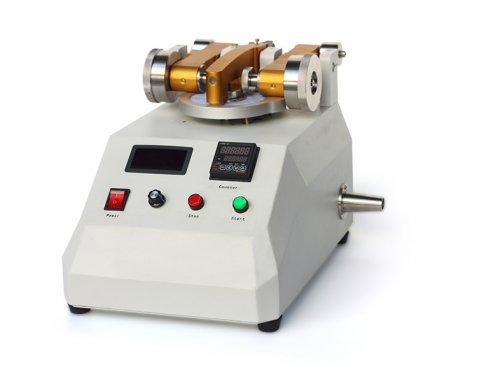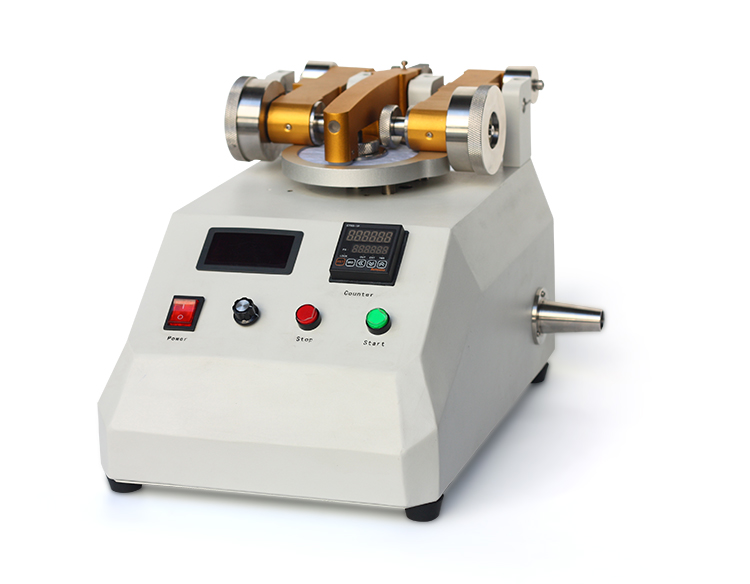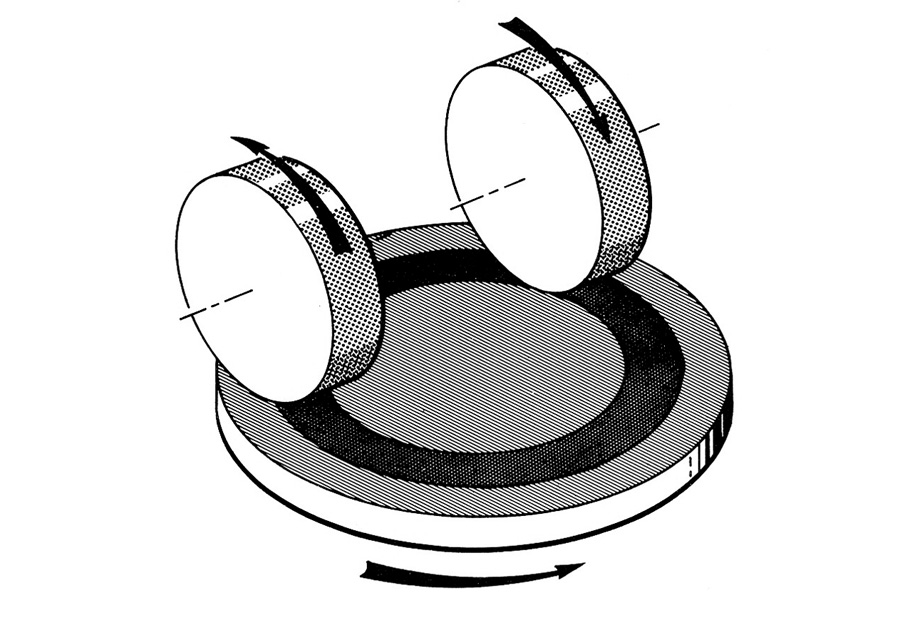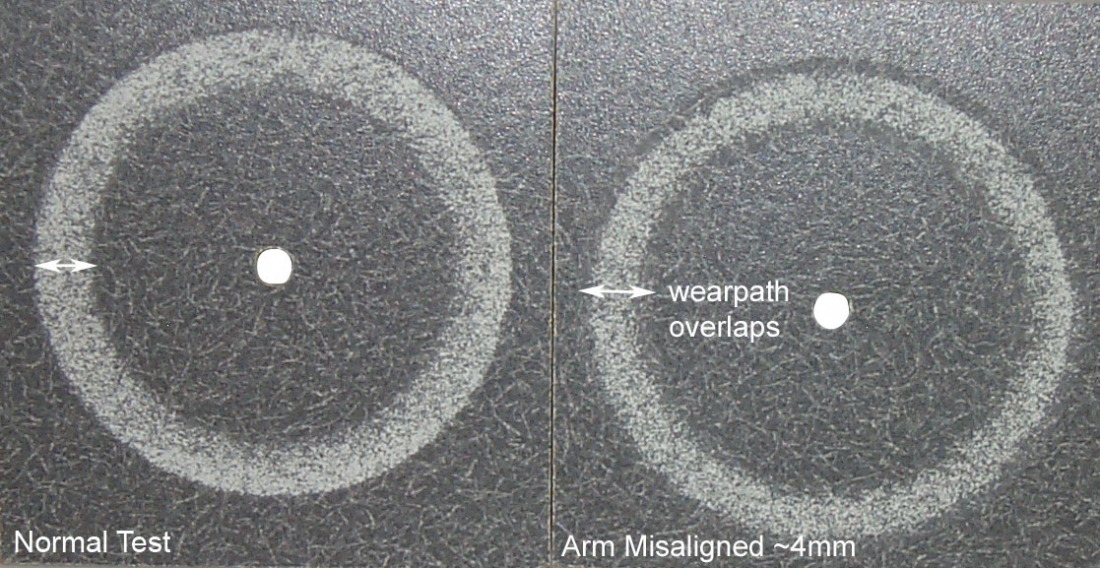Products
News
Contact
- Qinsun Instruments Co., Ltd.
- Tell:+86-21-6780 0179
- Phone:+86-17740808215
- Address:No. 2578 Minhang District Gu Dai Road, Shanghai
- Contact:Mr. Li
- QQ:846490659
Evaluation of Coatings for Fiberglass Epoxy Composite Probes

The Explosive Ordnance Disposal (EOD) Soldiers are the U.S. Army’s tactical and technical explosive experts. One tool they use to investigate potential explosive devices is a handheld probe fabricated from FR-4 fiberglass epoxy composite. In an effort to protect the probe from the damaging effects of abrasive components in soil, commercial coatings were evaluated for wear resistance. This report focuses on the application and performance properties of coatings applied to the FR-4 fiberglass epoxy composite material.
Experimental Method:
The Standard Test Method for Abrasion Resistance of Organic Coatings by the Taber Abraser (ASTM D4060-10) was used as a guide (9). This test method covers the determination of the resistance of organic coatings to abrasion produced by the Taber Abraser on coatings applied to a plane rigid surface (9). Taber Abraser model number 5135 was used to evaluate the coatings(figure 2).

The Taber is a single rotary platform that performs accelerated wear/abrasion testing. Prior to coating, the substrates were prepared by grit blasting with 180 aluminum oxide. All coatings were applied by spray or brush to the substrate and allowed to cure for a minimum of 1 week at ambient temperature prior to testing. The composite substrate (4 × 4 × 0.375 in) with coating was mounted to a turntable platform that rotates on a vertical axis (10). The test interval was 1000 cycles rotating at a speed of 60 cycles/min. Three samples per coating were prepared for this test series. Taber CS-10 abrasive wheels, which were applied at a load of 1 kg each, were lowered onto the specimen surface. The Calibrase* wheel CS-10 is designated for medium abrading action and is standard for coatings (10). The abrading wheels were resurfaced after every 1000- cycle interval. Characteristic rub-wear action is produced by contact of the test specimen against the sliding rotation of the two abrading wheels. As the turntable rotates, the wheels are driven by the sample in opposite directions about a horizontal axis displaced tangentially from the axis of the sample (figure 3). One abrading wheel rubs the specimen outward toward the periphery, and the other rubs inward toward the center while a vacuum system removes loose debris during the test. The wheels traverse a complete circle on the specimen surface, revealing abrasion resistance at all angles relative to the grain of the material. The resulting abrasion marks form a pattern of crossed arcs in a circular band that covers an area approximately 30 cm2 (10).

Conclusions:
Three commercial epoxy coatings were evaluated for abrasion resistance on FR-4 fiberglass epoxy composite with the Taber Abraser. The Rust-Oleum coating had the highest wear index (82 mg/cycle) and could not withstand more than 1500 cycles of abrasion testing. The 3M FG-512 coating had a better wear index (42 mg/cycle) than the Rust-Oleum and endured 6000 cycles of abrasion. The CeRam-Kote 54 product had the best wear index (20 mg/cycle) and survived 6000 cycles of abrasion testing. In addition, CeRam-Kote 54 is applied by spray and deposits a thin film, whereas the 3M FG-512 is applied via brush and leaves a slightly thicker uneven coating (figure 8). The thin film preserves the rigid sharp edge of the probe, while the irregularities of the 3M FG-512 may dull the edge and thus defeat the purpose. Therefore, we recommend CeRam-Kote 54 to be best coating to protect against the damaging effects of the abrasive components in soil and help extend the functional service life of the FR-4 composite probe. We also suggest placing probes coated with CeRam-Kote 54 into the field for assessment and comparison to uncoated probes.


The Taber is a single rotary platform that performs accelerated wear/abrasion testing. Prior to coating, the substrates were prepared by grit blasting with 180 aluminum oxide. All coatings were applied by spray or brush to the substrate and allowed to cure for a minimum of 1 week at ambient temperature prior to testing. The composite substrate (4 × 4 × 0.375 in) with coating was mounted to a turntable platform that rotates on a vertical axis (10). The test interval was 1000 cycles rotating at a speed of 60 cycles/min. Three samples per coating were prepared for this test series. Taber CS-10 abrasive wheels, which were applied at a load of 1 kg each, were lowered onto the specimen surface. The Calibrase* wheel CS-10 is designated for medium abrading action and is standard for coatings (10). The abrading wheels were resurfaced after every 1000- cycle interval. Characteristic rub-wear action is produced by contact of the test specimen against the sliding rotation of the two abrading wheels. As the turntable rotates, the wheels are driven by the sample in opposite directions about a horizontal axis displaced tangentially from the axis of the sample (figure 3). One abrading wheel rubs the specimen outward toward the periphery, and the other rubs inward toward the center while a vacuum system removes loose debris during the test. The wheels traverse a complete circle on the specimen surface, revealing abrasion resistance at all angles relative to the grain of the material. The resulting abrasion marks form a pattern of crossed arcs in a circular band that covers an area approximately 30 cm2 (10).

Conclusions:
Three commercial epoxy coatings were evaluated for abrasion resistance on FR-4 fiberglass epoxy composite with the Taber Abraser. The Rust-Oleum coating had the highest wear index (82 mg/cycle) and could not withstand more than 1500 cycles of abrasion testing. The 3M FG-512 coating had a better wear index (42 mg/cycle) than the Rust-Oleum and endured 6000 cycles of abrasion. The CeRam-Kote 54 product had the best wear index (20 mg/cycle) and survived 6000 cycles of abrasion testing. In addition, CeRam-Kote 54 is applied by spray and deposits a thin film, whereas the 3M FG-512 is applied via brush and leaves a slightly thicker uneven coating (figure 8). The thin film preserves the rigid sharp edge of the probe, while the irregularities of the 3M FG-512 may dull the edge and thus defeat the purpose. Therefore, we recommend CeRam-Kote 54 to be best coating to protect against the damaging effects of the abrasive components in soil and help extend the functional service life of the FR-4 composite probe. We also suggest placing probes coated with CeRam-Kote 54 into the field for assessment and comparison to uncoated probes.






